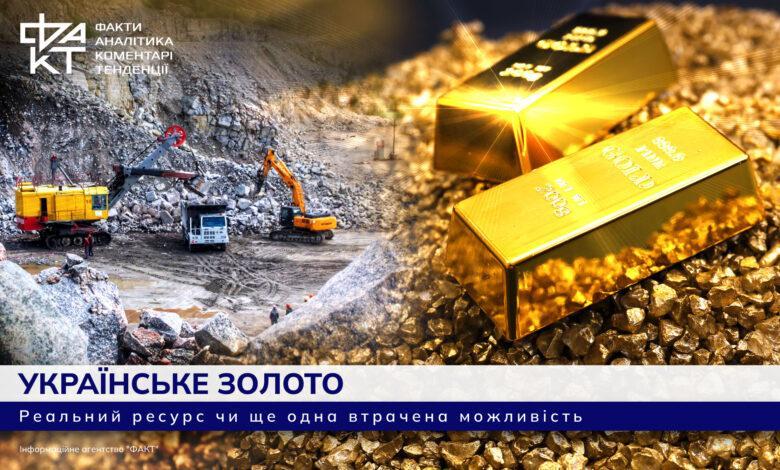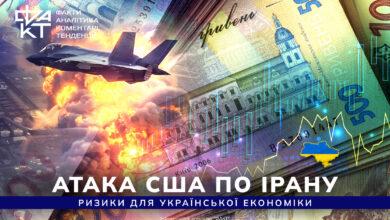Undiscovered wealth: gold as an untapped opportunity for the Ukrainian economy

While the world’s giants break spears for control over deposits in Africa and Latin America, a strategic treasure – gold – rests silently in Ukrainian land. Its deposits on the territory of the country have long been known to geologists, but until recently remained almost untouched. Lack of investment, outdated technologies, and legal uncertainty have held back the development of the gold mining industry for years. However, today the situation is changing. The growing demand for precious metals, the war, which prompted the search for new sources of income, and the emergence of private initiatives renewed interest in Ukrainian gold. Where exactly gold veins are hidden in Ukraine, who is already trying to develop them, what challenges the industry is facing, and most importantly, whether Ukrainian gold is capable of turning from a half-forgotten legend into a real economic trump card of the coming years, have long been questions that are becoming more and more relevant today.
Gold: the eternal passion of mankind and the quiet legend of the Ukrainian mountains
Gold has always occupied an important place in the life of mankind, because it is a metal that does not rust, does not age and does not lose its luster. It was sought in the deserts, mined in the mountains, stolen from temples and invested in crowns. This precious metal has become a symbol of power, stability, beauty and, of course, greed. From biblical times to modern financial markets, gold has always been at the center of human aspirations. The extraction of this bizarre metal is accompanied not only by complex technology, but also by unexpected, sometimes funny or even a little absurd stories. We are used to imagining gold diggers with a sieve in their hands and a sparkle in their eyes, but the modern reality, although somewhat different, is no less interesting.
For example, to get just one ounce of gold (a little more than 30 grams, which is equal to two teaspoons – ed.), you need to process about 30 tons of rock. This is about as much as the average road train weighs. And all for the sake of a small piece of metal that could get lost in a coat pocket.
Modern mines are not those romantic mines from adventure movies, but complex industrial complexes where everything from ground-penetrating radars to automated drilling systems works. But sometimes gold is found in the most unexpected places. For example, in 2018, a stone containing more than 90 kilograms of gold was removed from a mine in Australia. But he was simply not noticed right away. The miners thought it was an ordinary rock until someone noticed the strange shine.
Sometimes gold falls into hands not where it is looked for, but where it is not even expected. In Japan, for example, one of the municipal water treatment plants began to collect gold dust from the sludge. This is the result of gold being used in electronics that eventually end up in recycling or landfill. Such “urban mining” is becoming increasingly promising.
And it also happens that the gold is very close, but it is still impossible to get it. A liter of seawater contains about 13 billionths of a gram of gold. It sounds like nothing, but if you pour the entire Pacific Ocean through a filter, you will get several thousand tons. The problem is that it is almost impossible to collect this gold, because the costs will simply exceed the potential profit hundreds of times.
Gold can also change its behavior depending on what it is combined with. For example, in medicine, gold nanoparticles are used, which help to deliver drugs precisely to target cells, and are also capable of killing some types of cancer cells under the action of a laser. And this is the same metal we wear on our fingers. And here is another interesting fact: gold is so soft that you can literally crush it with your fingers. One gram of gold can be rolled into a thin foil with an area of almost one square meter, through which light will pass like through fog.
Ukraine, although rarely mentioned among the world’s gold mining giants, has its own deep, ancient and, unfortunately, underappreciated gold history. The Scythians were the first to mine gold here in the V-IV centuries BC. They skilfully processed the precious metal, leaving behind priceless jewelry that now adorns museum collections.
In the Middle Ages, during the reign of the Hungarian Kingdom, the Carpathian slopes turned into a real gold rush. Mines worked especially actively in the XIII-XIV centuries and not only satisfied the needs of the local elite, but also replenished the treasuries of European rulers.
A new stage began in the 18th–19th centuries, when the region came under the rule of Austria-Hungary. In the vicinity of modern Stebnyk in the Lviv region, industrial mining enterprises were already working, which made the Carpathians not only a center of wonderful nature, but also a source of valuable resources. The Soviet authorities in the 20th century also did not ignore this potential: development continued in the districts of Stari Sambor, although in a closed, almost secret mode.
Today, against the backdrop of rising gold prices and the strategic revaluation of resources, interest in Ukrainian subsoil is growing again. Lviv Region and Transcarpathia remain centers of exploration and mining, and more and more investors are turning their eyes to the mountains, where gold has been resting for thousands of years. Perhaps now is the time to return this metal to its rightful place in the history of Ukraine and not only as a legacy of the Scythians, but as a modern resource of development and economic independence.
Ukraine’s gold: who is looking for it, where is it mined and how is the industry changing
A real strategic value is hidden in the bowels of the Ukrainian land, which attracts more and more attention every year. However, there is much more to gold mining than simply a thirst for adventure or faith in luck. Large-scale industrial gold mining is not carried out in Ukraine for several reasons. The main ones include the complexity of geological conditions, the need for significant investment in mining and processing, as well as issues of environmental safety and economic feasibility. Although there are gold deposits in Ukraine, their development is often unprofitable due to the high cost of extraction and processing, as well as possible negative consequences for the environment.
To gain access to the development of gold deposits, companies must go through a complex system of permit documentation. This path has already been overcome by several enterprises that today have the legal right to mine gold on the territory of Ukraine. Among them is PJSC “Carpathian Ore Company”, which operates mainly in the western region of the country, rich in mountain resources. LLC “Saulyak” and “Stone Processing Company of Ukraine” also have permission to develop promising areas, while “Donetsk Kryaz” and “Lira Mine Minerals” focus on the east and central part of Ukraine, where geologists have discovered interesting ore structures.
All this is happening against the background of active transformation of the entire industry. Ukraine strives to take a step from potential to real economic benefit. Attracting foreign investments, modernization of production, use of the latest technologies in geological exploration and mining have turned from plans into real steps. The state, for its part, is trying to keep up: legislation is being improved, some procedures are being simplified for investors, and attractive conditions are being created for business in the extractive industry.
To understand exactly where gold reserves are concentrated in Ukraine, it is worth looking at the geological map of the country. Geologists divide Ukraine’s gold resources into three key geostructural areas. The first is located in the Transcarpathian Inner Depression, which is particularly interesting because of the Berehiv ore field and the Rakhiv ore district. Here, nature has left a valuable legacy in the form of hydrothermal deposits, when gold was formed thanks to hot waters circulating in the bowels for millions of years.
The second passes through the Donetsk folded structure, where two promising ore-bearing zones are distinguished. The most famous deposits here are Bobrykivske and Gostrobugorske, which were formed under the conditions of a complex tectonic structure and have the potential for further exploration.
The third area covers the Ukrainian shield. This is a real geological giant stretching across central Ukraine. It is here that several important deposits are concentrated: Klyntsivske, Yuryivske, as well as gold-bearing structures within ancient greenstone Archean rocks, such as Sergiyivske and Balka Zolota.
Interestingly, the nature of deposits in Ukraine is extremely diverse. There are ancient conglomerates that contain gold since the Precambrian, hydrothermal systems formed by magmatic processes, and even gold-bearing placers, where the metal accumulated in river valleys and sediments. And it is also worth mentioning skarns, sulfide structures, chromite formations, which complement the complex mosaic of the country’s geological gold content.
Today, several key deposits are officially included in the state balance sheet. Among the most famous are Muzhiivske and Saulyatske in Zakarpattia Oblast, Bobrykivske in Luhansk Oblast, Sergiivske in Dnipropetrovsk Oblast, Balka Zolota in Kherson Oblast and the Berehivskoe deposit, known not only for gold, but also for other valuable metals. By calculations scientists, the total potential of Ukrainian subsoil in terms of gold ore equivalent may reach more than 3,000 tons. This is not just a drop in the ocean, but more than 6% of the world’s reserves, according to the US Geological Survey, which estimates the global remaining recoverable gold at 50,000 tons.
Transcarpathia is considered one of the oldest and most promising regions: about 55 tons of gold have already been confirmed in the Muzhiivsky and Sauliatsky deposits alone. The Berehiv deposit, where gold is interwoven with polymetals, can store up to 100 tons of this valuable metal. Donbas also has gold potential, in particular within the Bobrykiv deposit, but due to the lack of in-depth research, it is still difficult to give an accurate assessment. Nevertheless, geologists predict up to 400 tons of gold ore there. The largest treasure, according to forecasts, lies within the boundaries of the Ukrainian Shield. There are such deposits as Serhiivske, Klyntsivske, Yuryivske, Maiske, Balka Shiroka and others, and the total gold potential is estimated at more than 2,400 tons.
It should be noted that in 2024, the gold and currency reserves of Ukraine reached more than 37 billion dollars, which indicates a fairly confident margin of financial stability. The main part of the reserves is not money in safes, as ordinary citizens often imagine, but securities, the value of which exceeds 27 billion dollars. In addition, the reserves include cash, deposits and accounts in foreign banks amounting to about 7.5 billion, as well as monetary gold worth more than 2 billion dollars.
However, not everything is as bright as it seems. Most deposits still require thorough exploration, systematic evaluation and investment. Although the resources look promising, without international evaluation standards and a stable investment climate, their industrial development still remains a difficult task. As you can see, there is gold in Ukraine, but for it to play on the world market, large investments, modern technology and political will are needed. But, unfortunately, the state only declares its desire to develop the extractive industry, but there is no systematic program or strategy specifically for gold. Benefits, public-private projects, access to geodata are either absent or still ineffective.
Yes, the forecasts are impressive, but many deposits remain poorly explored or studied using outdated methods. Often, exploration data from the Soviet period do not meet modern international standards, such as JORC or NI 43-101, which makes the objects “unattractive” for foreign investors. To start mining, a company must go through a long and often opaque process of approvals, licenses and permits. Sometimes it stretches for years, and the rules can change “on the fly”. Investors themselves are wary of such long-term projects. Therefore, it is quite clear that the war, instability in the border regions and the threat of losing control over some deposits are seriously hampering the country’s gold mining industry.
How much gold is there on Earth and why do we only see the top of it?
For assessments According to the US Geological Survey, mankind has mined approximately 206,000 tons of gold throughout its history. Most of this volume became the basis of jewelry. The aesthetics of many eras began with engagement rings, medallions and crowns. However, other estimates, including those from the World Gold Council, show even higher numbers — more than 238,000 tons. If all that gold were piled up, it would fit into a cube only 22 meters on each side. You can imagine this shiny monolith in the middle of a city square, which is small in size, but with a value that exceeds the GDP of most countries. This golden “pie” is divided quite interestingly:
- 45% is for jewelry,
- 22% — on ingots and coins,
- 17% are kept in their reserves by central banks.
But all this remains only the tip of the iceberg. There are still about 70.5 thousand tons of gold in the earth’s crust, suitable for development with modern technologies. Russia, Australia, South Africa and China are considered the richest in gold resources. According to experts, more than 145 thousand tons may be hidden, unconfirmed resources. Thus, the total amount of mined and potential gold on the planet ranges from 277 to almost 300 thousand tons. But all these are trifles compared to how much gold actually exists in the bowels of the Earth.
Scientists from the University of California at Berkeley calculated that there are approximately 441 million tons of gold scattered in the earth’s crust. However, most of this metal is in such microscopic concentrations that it is simply impossible to extract it economically. And about 99% of all the earth’s gold is hidden in the very core of the planet. If it were technically possible to extract it, then we could literally cover the entire surface of the Earth with a layer of gold half a meter thick. Geologists explain that during the formation of the Earth more than 4.5 billion years ago, heavy metals, including gold, “drown” in the red-hot lava, heading for the core.
Only the crumbs got into the upper layers of the planet. And a little more came later, during the meteorite bombardment that lasted between 4.1 and 3.8 billion years ago. Although we mine thousands of tons of the precious metal every year, its true riches remain hidden. And until we can drill to the core or drain seawater with atomic precision, gold will remain a rare and mysterious symbol of value.
Therefore, you should not perceive gold as just an ornament or a luxury, although the lion’s share of it in the world is still used for the manufacture of jewelry (more than 85% of all reserves). This metal is a multifaceted resource with strong strategic potential and its role in modern technologies, medicine and financial security is only growing. While the world continues to rethink the value of this metal, Ukraine has a unique opportunity to transform gold from a silent witness of history to an active player in the economic future and use it as a tool for stability, development and sovereignty.





